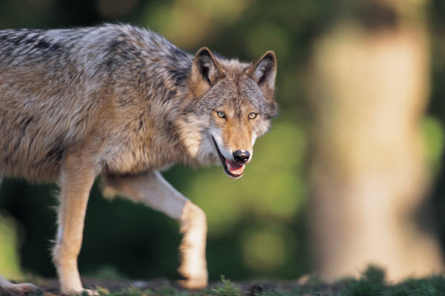 By 1880, New England had been almost completely deforested. Moose, Wolf, Black Bear, and Wild Turkey were gone or limited to tiny habitat islands. Deer were rare. Then profitable farming moved west to the rich plains of Ohio and Indiana. Good-bye to rocky New England.
By 1880, New England had been almost completely deforested. Moose, Wolf, Black Bear, and Wild Turkey were gone or limited to tiny habitat islands. Deer were rare. Then profitable farming moved west to the rich plains of Ohio and Indiana. Good-bye to rocky New England.
With reforestation, Moose and Wild Turkey have rebounded, and Beaver, Bear, and White-Tailed Deer have become pests in some areas. So have the highly-adaptable coyotes, who moved into wolf territory (coyotes were never native to the Northeast) and are now considered pests in New England with generous hunting and trapping seasons for eastern coyotes, coydogs, and coy-wolves if any.
Those critters are all Wolf food, including coyotes. Maybe not the bears.
The new coyotes of the Northeast are larger than those of Western US and Canada, may have a few wolf genes, and a large male is easily mistaken for Wolf or German Shepherd.
There is only one species of Wolf in the world - Canis lupus. The species has - or had - a global reach, with all of its various subspecies (subspecies means races - of which the domesticated Dog is one. The Grey Wolf and the Eastern Wolf are probably the same subspecies, but there is much controversy about wolf subspecies genetics).
All domestic dogs in the world were genetically engineered from the Eurasian Grey Wolf subspecies, including African domestic dogs, beginning around 14,000 years ago. Wolves - dogs - were domesticated before any other animal but your average wild wolf cannot be civilized, even if raised from birth by man. Humans must have found the rare wolf individuals with civilizable genetic flaws as in photo below:

North America's Grey Wolf was an immigrant across the Bering Strait from Siberia and, along with the Cougar, were the dominant predators across the entire US and subarctic Canada.
Dominant predators require large ranges of undeveloped land, preferably without roads and cars. The Cougars will have a tough time repopulating the Northeast, but the Wolves can come down from Quebec. In dribs and drabs, they have been doing so. Probably lone wolves. Visual reports are not reliable, but DNA testing is so the animal has to be shot or trapped to be tested to distinguish the animal from a coydog, a coy-wolf, etc. I don't know why coyotes and wolves can interbreed if they are separate species.
There are no records of confirmed Wolf breeding or pack-forming yet in New England, but these occurences would not be surprising, and would be welcome to many. Wolves remain common enough in Canada to have popular hunting seasons for them. Wolves leave people alone, unlike foolish Cougars who sometimes confuse a jogger with a deer and eat them up.
Here's one report from the Adirondacks
About wolves in Maine
Some reports re wolves in New England


 By 1880, New England had been almost completely deforested. Moose, Wolf, Black Bear, and Wild Turkey were gone or limited to tiny habitat islands. Deer were rare. Then profitable farming moved west to the rich plains of Ohio and Indiana. Good-bye to rocky New England.
By 1880, New England had been almost completely deforested. Moose, Wolf, Black Bear, and Wild Turkey were gone or limited to tiny habitat islands. Deer were rare. Then profitable farming moved west to the rich plains of Ohio and Indiana. Good-bye to rocky New England.